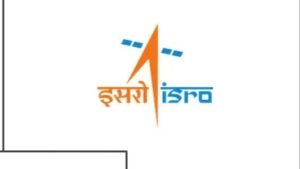ISRO Launches LVM3-M5/CMS-03 MISSION
|
General Studies Paper II: Government Policies & Interventions, Space Technology |
Why in News?
Recently, ISRO successfully launched the Indian Navy’s advanced communication satellite GSAT-7R (CMS-03) from Sriharikota in 2025, strengthening India’s space-based defence communication network.

Highlights of the LVM3-M5 / CMS-03 Mission
- Launch Date: The mission lifted off on 2 November 2025 in the evening Indian Standard Time. The countdown for the launch began roughly 24 hours earlier.
- Location: The rocket took off from the Second Launch Pad of the Satish Dhawan Space Centre (SDSC), situated at Sriharikota in Andhra Pradesh, India.
- Launch Vehicle: The mission deployed the heavy-lift rocket known as LVM3‑M5 (also referred to as LVM3 or GSLV Mk III). This marked the fifth operational flight of the LVM3 series.
- Payload: The satellite onboard the multi-band communication satellite CMS‑03 (also referenced as GSAT-7R).
What is CMS‑03 (GSAT‑7R)?
- About: The satellite CMS-03 is an advanced communication spacecraft developed by Indian Space Research Organisation (ISRO) in partnership with the Indian Navy. It aims to serve strategic maritime communication needs across the Indian Ocean Region.
- Objectives: One key objective of CMS-03 is to enhance secure voice, video and data links between naval assets such as ships, submarines, aircraft and shore stations.
- The satellite seeks to expand the Indian Navy’s operational footprint across the Indian Ocean Region (IOR) by providing persistent and real time communication coverage far from the Indian mainland.
- CMS-03 also aims to replace ageing communication satellites previously used by Indian defence forces, thereby elevating India’s maritime domain awareness.
- Features: CMS-03 is a multi-band communication satellite equipped with transponders operating in various frequency bands including C, Ku and extended-C bands to support high-capacity bandwidth links.
-
- The spacecraft has a launch mass of approximately 4,410 kg, the largest ISRO-built satellite ever.
- Its coverage footprint spans the Indian landmass and a wide oceanic region, enabling connectivity over ships and aircraft deployed across large maritime zones.
- The spacecraft incorporates many indigenous, state-of-the-art components, developed specifically to meet the Indian Navy’s operational requirements.
- The satellite is built to be placed into a Geosynchronous Transfer Orbit (GTO) and eventually into a geostationary slot for sustained service.
- It features anti-jamming, frequency hopping, and advanced encrypted data links for secure Indian military operations.
What is the LVM3 Launch Vehicle?
- About: The LVM3 is a heavy-lift three-stage launch vehicle developed by Indian Space Research Organisation (ISRO). It was earlier known as the GSLV Mk III. The vehicle is designed and built in India using largely indigenous components. Its first experimental flight occurred on 18 December 2014.
- Features: The design of the LVM3 features three propulsion stages in its ascent stack.
- The first stage consists of two large solid strap-on boosters designated S200.
- The second stage is a liquid‐core stage called L110 powered by twin liquid engines (Vikas engines) burning hypergolic propellants.
- The third stage (upper stage) is a cryogenic stage named C25 using indigenous cryogenic engine CE20, burning liquid hydrogen and liquid oxygen.
- The fairing at the top has a diameter of 5 metres and accommodates large payloads.
- The structural parameters of the LVM3 include a height of approximately 43.5 metres and a gross lift-off mass of around 640 tonnes in standard configuration.
-
-
- The vehicle is built with an equipment bay, payload adaptor and payload fairing on top of the core stages.
-
- Working Process: At lift-off, the two S200 boosters fire simultaneously and provide the bulk of initial thrust. After about 134 seconds the S200 units separate and the liquid core stage continues with the L110. The cryogenic upper stage ignites later to inject the payload into the desired orbit.
- Significance: The LVM3 marks a significant advance in India’s space capabilities. It gives the nation the capacity to launch 4 000 kg-class satellites to GTO from Indian soil. The LVM3 has demonstrated a successful launch record since its first orbital flight in June 2017, including the landmark Chandrayaan-3 mission.
Significance of the LVM3-M5 / CMS-03 Mission
- Boost to the Gaganyaan Mission: The success of the LVM3-M5/CMS-03 mission strengthens India’s confidence in the LVM3 rocket, which will also be used to carry astronauts for the Gaganyaan Mission. The mission demonstrates ISRO’s readiness to handle heavy payloads and complex flight sequences, both essential for human spaceflight in the coming years.
- Future Space Station Missions: The LVM3-M5 mission lays a strong foundation for India’s space station programme, targeted for the next decade. The mission provides valuable experience in mission planning, stage coordination, and long-duration orbital stability. This learning will help ISRO execute its Bharatiya Antariksha Station project, expected around 2035, with greater technological confidence and indigenous systems.
- India’s Position as a Global Space Technology Leader: The successful deployment of such a satellite from Indian soil highlights ISRO’s capability to compete globally in heavy-lift launches. It enhances India’s profile as a reliable launch partner for other countries seeking cost-effective and efficient services. This achievement places India in the same league as nations like the US, Russia, and China, which possess advanced heavy-lift systems.
- Strategic Communication Capabilities: The CMS-03 satellite (GSAT-7R) significantly boosts the Indian Navy’s communication and surveillance network across the Indian Ocean Region. It ensures secure and uninterrupted data exchange between ships, submarines, aircraft, and command centers. With this satellite in orbit, India gains a robust defence communication backbone, improving national security and operational readiness across all maritime fronts.
- Vision of Atmanirbhar Bharat in Space Technology: The LVM3-M5/CMS-03 mission reflects India’s steady progress toward self-reliance in space technology. It reduces dependency on foreign launch systems and fosters local expertise in high-end aerospace manufacturing. The mission aligns with the government’s Atmanirbhar Bharat initiative, showcasing India’s capacity to design, build, and operate advanced space systems independently.
The Synergy Between ISRO and Armed Forces
- Over the past decade, India has witnessed a steady and deliberate strengthening of cooperation between ISRO and the Indian Armed Forces. This partnership began to deepen after the launch of GSAT-7 (Rukmini) in 2013, India’s first dedicated military communication satellite for the Navy.
- Following that, missions such as GSAT-7A (2018) for the Air Force and EMISAT (2019) for electronic intelligence reinforced ISRO’s role in supporting national defence objectives.
- Defence communication satellites form the technological backbone of India’s Network-Centric Warfare (NCW) framework. Satellites like Cartosat, RISAT, and EMISAT assist in reconnaissance and border monitoring, giving India the ability to detect threats and respond swiftly.
- ISRO’s technologies increasingly serve dual-use purposes, benefiting both civilian and defence sectors. The Indian Regional Navigation Satellite System (NavIC), for instance, provides secure navigation signals to defence users while supporting civilian applications.
- India’s defence and space agencies are working toward a unified space-based surveillance architecture. This network integrates satellites from ISRO and defence entities such as the Defence Research and Development Organisation (DRDO) and the Defence Space Agency (DSA). The collaboration enables continuous monitoring of borders, maritime routes, and space activities of rival nations.
- Policy frameworks such as the Space Activities Bill and the Defence Space Strategy 2024 aim to formalise such coordination. The creation of the Integrated Defence Staff (IDS) also facilitates information sharing between ISRO and the three armed services.
|
Also Read: ISRO-NASA Launches Earth Observation Satellite NISAR |









